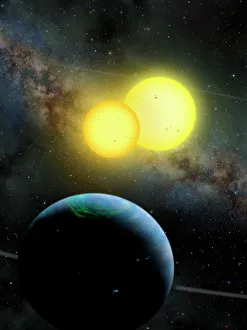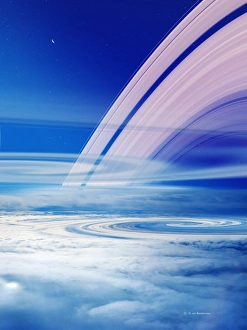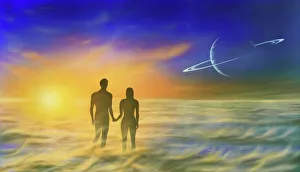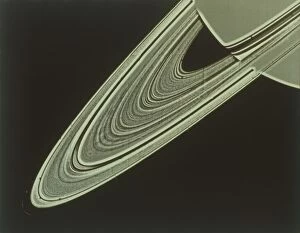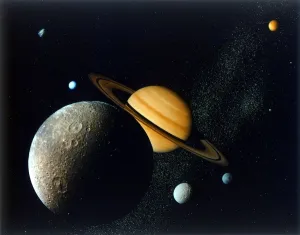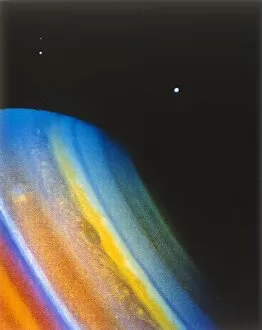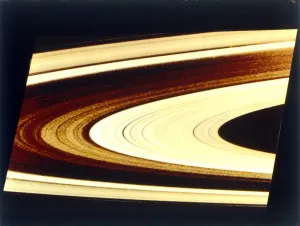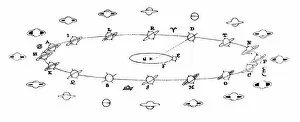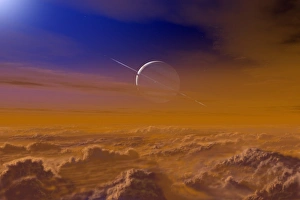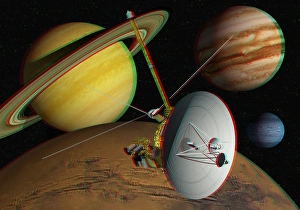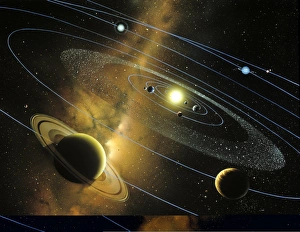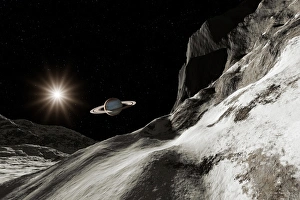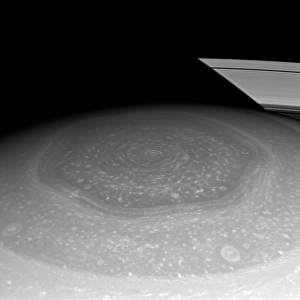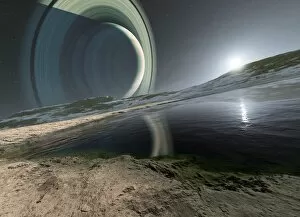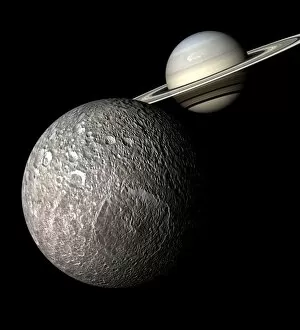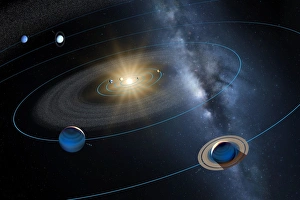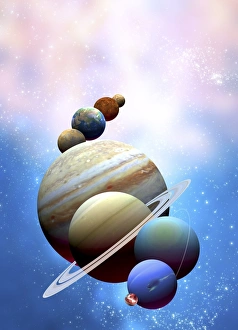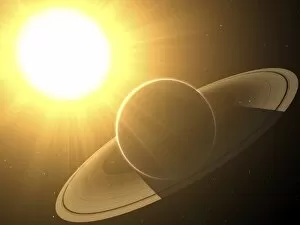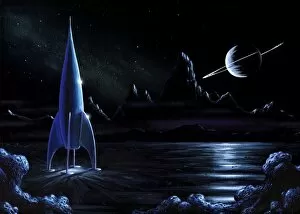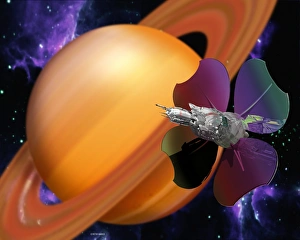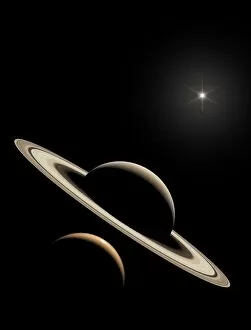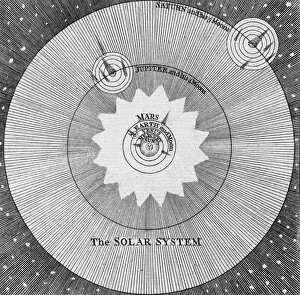Saturnian Collection
"Saturnian: Exploring the Mysteries of the Enigmatic Planet" In the vast expanse of the Kepler-35 planetary system, lies a celestial wonder known as Saturn
All Professionally Made to Order for Quick Shipping
"Saturnian: Exploring the Mysteries of the Enigmatic Planet" In the vast expanse of the Kepler-35 planetary system, lies a celestial wonder known as Saturn. With its mesmerizing rings and captivating moons, this gas giant has fascinated humanity for centuries. Artwork C015/0790 portrays the intricate dance between humanity and the universe, reminding us of our eternal quest to understand our place in this cosmic tapestry. The Voyager 1 spacecraft captured a breathtaking two-image mosaic of Saturn's Rings in 1980, revealing their sheer grandeur and beauty. NASA's remarkable creation allows us to marvel at this celestial spectacle from millions of miles away. During its journey through space in the 1980s, Voyager 1 also gifted us with an awe-inspiring glimpse into Saturn's enigmatic system. The image showcases the planet alongside its ethereal moons Tethys and Dione, highlighting their mysterious allure. NASA's exploration didn't stop there; they delved deeper into Saturn's secrets by capturing its cloud deck—a swirling masterpiece that conceals countless mysteries beneath its vibrant layers. Voyager 2 joined in on unraveling Saturn's wonders by presenting an astonishing view from over 27 million miles away. This perspective allowed us to witness firsthand the majestic presence of both Saturn itself and one of its loyal companions—moon Dione. But it is perhaps Voyager 1 that left an indelible mark on our understanding of Saturn with its close-up encounter with those magnificent rings. Spanning a staggering range of approximately 717, 000 kilometers, these rings captivate our imagination like nothing else in our solar system. Even before modern technology enabled such detailed observations, artists like E Scriven depicted planets like Saturn based on early scientific knowledge. Their artwork from c1902 transports us back to a time when we were just beginning to grasp the wonders hidden within our own galactic neighborhood.

